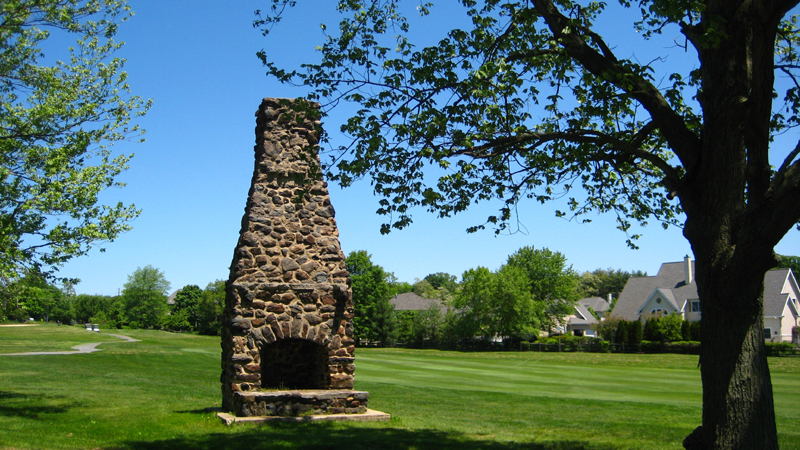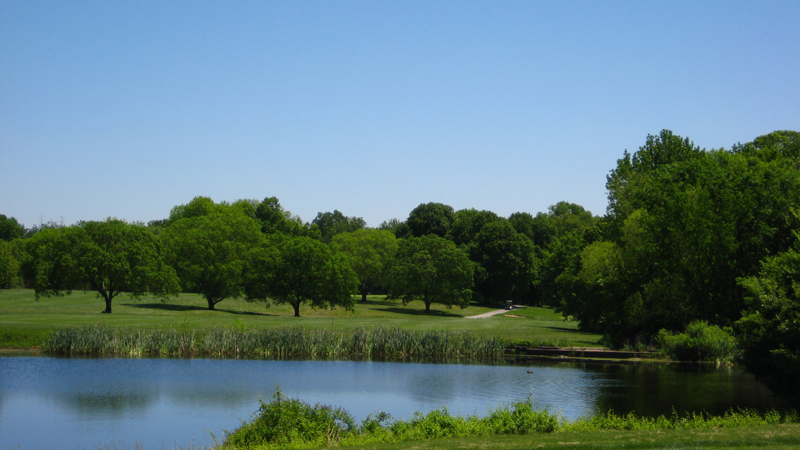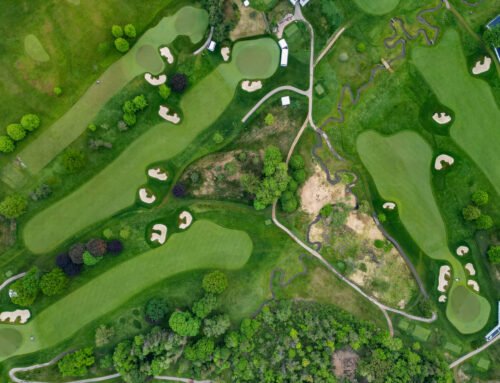Endearing Ed Oliver Golf Club
By Nate Oxman
February 2011
Wander through the streets of Westover Hills in Wilmington, Del. and one will be struck by the array of stately mansions lining the neighborhood’s windy streets. Much like the sprawling estates that surround some of the Philadelphia area’s most prestigious golf clubs, the homes in Westover Hills would too be worthy of complementing an upscale private club.
For about 30 years that was exactly the case as Westover Hills, established in 1930 and developed by the Du Pont Company to provide residences for its high-level executives, offered a close proximity to the exclusive Wilmington Country Club.
Today, Westover Hills remains one the most sought-after residential areas in and around Wilmington, while Wilmington Country Club has long been removed. But, even though the club found new digs at its current location just off of Route 52 (Kennett Pike), the original golf course – although altered a few times over – along North DuPont Road remains.
Named in honor of Wilmington native and eight-time PGA Tour winner Ed “Porky†Oliver, the course is now known as Ed Oliver Golf Club. And although Ed Oliver GC, a municipal course owned by New Castle County and operated by Billy Casper Golf, is no longer thought to be in the same category of the elite area country clubs that it once was the founding member of, it remains one of the most popular places to play in the Wilmington area. The reason is its wonderful golf course, one that was voted the “Best Municipal Golf Course in Delaware†by Golf Digest in 2009.
It opened in 1901 and was reportedly designed by Wilfred Reid, a native of Nottingham, England who was brought to Delaware at the request of the Du Pont family to build a golf course. Although Ed Oliver GC’s website cites Reid as the original course’s designer, other sources, such as The Great Delaware Sports Book, give credit to two early members of the club, Henry Tatnall and J. Ernest Smith. Reid later did serve as the golf professional at the original Wilmington CC. It appears as though the golf course the Du Pont’s hired Reid to design may have been one of the early courses at Du Pont CC.
Ed Oliver GC meanders through approximately 150 acres and maintains a classic parkland-style feel throughout. It’s that parkland setting, as well as a navigable length of just 6,115 yards from the blue (back) tees, and a playable cut of rough, that attracts Ed Oliver GC to the mid- to high-handicap golfer. However, with small, well-guarded greens, a number of tree-lined fairways and subtle elevation changes, the course can certainly be enjoyed by the better player.
No matter your skill level, Ed Oliver GC is worth the short ride down I-95 from the Philadelphia area.
The course opens with a pleasing 388-yard par 4. Trees line either side of the fairway, which turns ever so gently to the left toward a tiny, tucked green guarded by a creek in front and a bunker on either side. Following the uphill 369-yard par-4 second hole are two testy uphill par 4’s. The 452-yard third hole runs alongside Greenhill Avenue and often features a blind second shot into a small, well-sloped green planted in the back corner of the property. With a rolling fairway and out of bounds spanning the entire left side of the hole, it’s easy to see why the 452-yard fourth is the No. 1 handicap hole.
Arguably Ed Oliver GC’s most difficult stretch continues at the 210-yard par-3 fifth. A hole the immortal Bobby Jones once called, “one of the finest of its kind,†this uphill, straightaway one-shotter, with a water tower standing tall in the background, plays longer than its listed yardage. With wind often a factor and a narrow green guarded by bunkers on either side, par here feels like a well-deserved birdie.

The 210-yard par-3 fifth at Ed Oliver Golf Club is a hole Bobby Jones once called “one of the finest of its kind.â€
A legitimate birdie might be available at Ed Oliver’s only par 5, the 510-yard sixth, should you safely find the tree-lined fairway and ultimately the small, slightly elevated green that slopes from back to front. The short, 360-yard par-4 seventh is followed by the twisting 388-yard par-4 eighth, where the fairway bends left – toward the O.B. that runs up that side – and then shoots back to the right and uphill toward a deep green.
After the 148-yard par-3 ninth, players head back to the first tee, which shares ground with the 362-yard par-4 10th,a slight dogleg left that offers a view of the tallest buildings of the Wilmington skyline as a backdrop.
The 380-yard par-4 11th begins another outstanding stretch of holes at Ed Oliver GC. It starts with a tee shot over a pond to a fairway that leans slightly to the right. An ideal approach enters from the left side, where a player has a better view of the target.
On paper, the 298-yard par-4 12th appears to be a birdie hole. But an uphill tee shot to an elevated green guarded on the left side by a cavernous bunker complete with giant boulders eagerly gobbles up poor approaches.
Threes are hard to come by at the 12th as well as at the 145-yard 13th should you miss the green. Framed by a bunker on both sides, trees behind, and grassy mounds in front, this uphill par-3 makes an up-and-down from any spot a daunting task. Two short par 4’s at Nos. 14 and 15 allow players to ease into another noteworthy three-hole stretch to finish the round.
The 355-yard par-4 16th starts with an elevated tee shot to a fairway protected by O.B. – in the form of the club’s driving range – right and left. A cluster of trees encroach the fairway from the left while a greenside bunker beyond that protects any pins tucked on the left side. The teeing ground for the 179-yard par-3 17th is eerily located ever so close to Green Hill Cemetery. Don’t let the gravestones spook you for you’ll need to focus all your efforts on making par on this large, undulated green with beastly bunkers standing guard on either side.
Ed Oliver GC concludes with the signature 400-yard par-4 18th, a sweeping dogleg that climbs uphill as it turns to the right toward an elevated green that slopes significantly from back to front and is surrounded by bunkers.
Standing in the right rough is the stone chimney, a structure that predates the original club’s inception in 1901. It serves as the Ed Oliver’s logo and a lasting reminder to visitors of the site’s storied past.

An old stone chimney that predates the founding of the original Wilmington CC in 1901 stands just off the right side of the 18th fairway at Ed Oliver GC.
While the course is poised to remain a favorite among Wilmingtonians thanks to its timeless charm and affordable rates, there have been periods in its 110-year history when its future appeared bleak. The most recent came in 2008 when the lease expired and the club was basically boarded up. But in came Billy Casper Golf. Founded by Hall of Famer Billy Casper, the company manages over 110 facilities nationwide. With the help of Director of Golf Jim Grimes, who spearheaded a similar resurrection at nearby Delcastle Golf Course, and Superintendent JC Clevenger, who spent time taking care of Cobbs Creek Golf Course, Philadelphia’s favorite muni, the club remains strong.
Changes
But major changes have been occurring on the property for some time. Around the middle of the 20th century Wilmington Country Club, which leased the property from the Du Ponts, decided it would be in the club’s best interest to expand. Without the land to do so, the club was forced to relocate, leaving the future of the original golf course very much uncertain. But plans began to come together to keep the course and turn it into a public facility when Wilmington CC’s lease expired on Dec. 31, 1961. The hope was that a new public course would take some of the burden off of another city course, the highly-popular Rock Manor Golf Club.
The first major step in that direction came in December of 1958 when the Du Ponts donated 108 acres of land – containing 15 golf holes – of the Wilmington CC site. The city still needed more land. It came in January of 1959 when the Du Pont family donated 15 additional acres—enough to ensure that the city would be able to maintain an 18-hole golf course. Plans were then established to build three new holes on the new 15-acre tract west of the 17th fairway.
At the time Wilmington CC still owned a 21-acre “L-shaped†plot of land that contained a clubhouse and tennis courts.
The Green Hill Golf Course named was adopted in February of 1960. It was a name that at the time had been in the city of Wilmington’s history for 100 years. Green Hill was a piece of property bordered on the east side by Greenhill Avenue. It eventually became a large portion of the golf course.
On Friday, July 1 1, 1960, Green Hill Golf Course opened for play. It’s first professional was Willie Palumbo.
A new clubhouse and a revised layout, with changes to holes 1, 10, 11, 12, and 18, was constructed in 1962 thanks to Alfred H. Tull, who also penned nearby courses at Brandywine CC, Du Pont CC, Delaware National CC, and Radley Run CC in West Chester, Pa. In 1971, course architect Ed B. Ault provided additional redesign work.
Ed “Porky†Oliver
Just about the same time the popularity of Green Hill GC was rising, the playing career of a portly Wilmington golf professional named Ed Oliver was coming to an unfortunate end. An assistant professional at Wilmington CC when he turned pro in 1933, Oliver won his first professional tournament in 1936 at the Central Pennsylvania Open. He became a regular PGA Tour player in 1940 when he captured his first tour title at the Bing Crosby Pro-Am and quickly garnered the reputation as a good-humored, jovial personality.
Oliver, who earned the nickname “Porky†for his plump stature (5-foot-9, 240 pounds), appeared to qualify for a spot in a playoff at the U.S. Open that year at Canterbury Golf Club in Ohio with Gene Sarazen and Lawson Little, only to be disqualified for starting his final round early in an effort to beat severe weather that was approaching the area. Although the incident was difficult to swallow, Oliver won the very next week at the St. Paul Open in Minnesota and became a fan favorite.
He won the 1941 Western Open, a prestigious event at the time, before being drafted and spending four years in the Army. Oliver returned to the tour in 1946 and enjoyed his best season to date, finishing fourth on the money list after earning $17,941. That year Oliver fell to Ben Hogan in the 36-hole match play final of the PGA Championship. It would be the first of three runner-up finishes for Porky in a major championship. The other two came at the U.S. Open in 1952 to Julius Boros and the Masters in 1953 to Hogan.
Although Oliver won eight tour events (12 professional events worldwide), he finished second 22 times and earned the nickname “America’s Runner-up.†Oliver retired from professional golf in 1960 after being diagnosed with lung cancer. He passed away on Sept. 21, 1961. His good friend Sam Snead said of Oliver, “On a given day Porky could beat any golfer who ever lived. But golf to Porky was just a means to have fun.â€
On May 23, 1983, Green Hill Golf Course was renamed Ed ‘Porky’ Oliver Golf Club. Today, the pro shop is adorned with photographs and memorabilia of Oliver.
Off the course
In addition to its golf course, Ed Oliver GC features a full practice facility, including a driving range and putting green. Offering lessons is LPGA Master Teaching Professional Rebecca Dengler, one of the LPGA’s Top 50 Instructors in the country. A PGA Class A Member since 1991 and an LPGA Class A Member since 1993, Dengler’s knowledge of teaching the game is vast.
Renovations were recently completed on the club’s 4,000 square foot clubhouse, including the cozy Greenhill Pub that overlooks the golf course and offers views of the Wilmington skyline from both inside and on the outdoor deck. The building also houses the Dover Room. Perfect for weddings, receptions, business meetings and private parties, the room can accommodate 140 guests, while the more intimate Wilmington Room (capacity of 50). Regardless of the type of function, Ed Oliver GC and General Manager Karen Duncan offer fully customized event planning to meet your every need.
THE END








